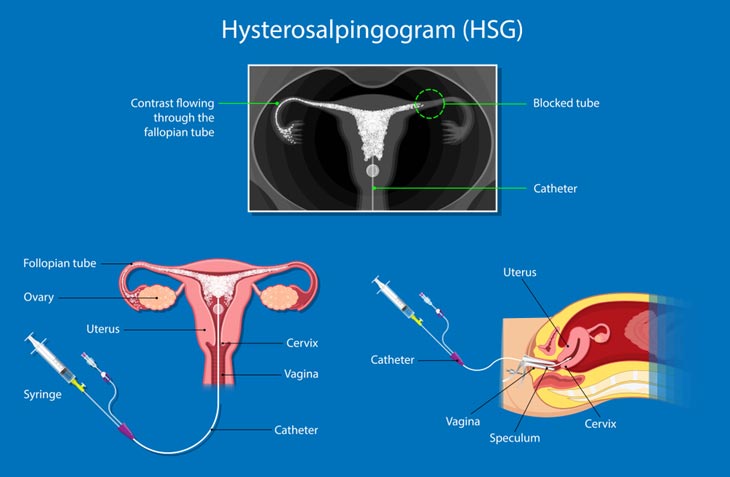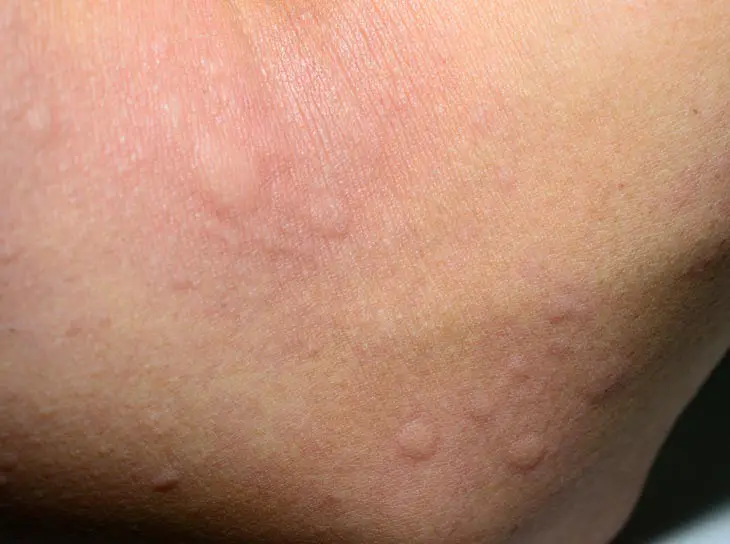HSG is frequently used while diagnosing obstructed fallopian tubes. This test can also discover other problems in the uterus’s size or shape, infertility, and other pregnancy-related issues.
Furthermore, early ovulation after HSG is one of the most worrying issues. Read until the end to get hold of hazards and side effects of HSG.
Does Early Ovulation Occur After HSG?

A hysterosalpingography is usually done after the menstrual period and especially before ovulation. The purpose is to determine internal female genital problems and early ovulation after HSG.
What is HSG?
Hysterosalpingography (HSG) is an X-ray test used to examine the inside of the uterus and fallopian tubes.
For some cases of cervical sterilization, a hysterosalpingography scan is necessary to make sure that the fallopian tubes are completely closed.
Hysterosalpingography should not be taken for the following cases:
- Pregnant (affects maternal health).
- Pelvic inflammatory disease.
- Severe uterine bleeding at the time of the test.
- A history of contrast allergy.
Why Is A Hysterosalpingogram (HSG) Necessary?
Your doctor can use a hysterosalpingogram or a hysterosalpingography test to look for issues inside your uterus, especially for those with conceiving problems.
This minor operation is used to determine the shape and contour of the endometrial (uterine) cavity and document the existence of endometrial polyps, uterine fibroids, or scarring. In addition, it can determine if the fallopian tubes are open.
When Should HSG Be Performed?
A hysterosalpingography scan is usually done in a hospital or clinic. The best time to do the test is during the first half of your menstrual cycle (from days 6–11 of your period). This is also the period when conception is rare.
You can have a hysterosalpingography test in the first two weeks after your period if you’ve had intercourse and aren’t on birth control (such as the pill or tracking ovulation).
The time when hysterosalpingography can be taken for each object is listed below:
- If you’re expecting a child, your doctor will tell you when to get a Hysterosalpingography.
- You should have hysterosalpingography after three months when you have your transcervical sterilization.
The HSG Procedure
The hysterosalpingography process is carried out following these steps:
- Step 1: Your doctor will place a speculum into your vagina while lying with your feet on a stand. The speculum will expand the vaginal entrance, allowing the doctor to see the cervical area. The doctor will use antibacterial soap to clean your cervix.
- Step 2: A local anesthetic may be injected into the cervix’s end (to relieve pain). When the doctor provides the anesthetic injection, you will feel uncomfortable with a tiny sting.
- Step 3: Inject dye into the uterus. There are two ways to accomplish this. One method is to use a device to immobilize the cervix, then implant a catheter into the cervix and inject the dye. The second method involves passing a tiny plastic tube through the top of the cervix. At the end of this plastic tube is a small inflated balloon. This balloon holds the tube in place in the uterus.
- Step 4: After that, the doctor will remove the speculum and place you in front of the X-ray machine.
- Step 5: A stream of dye-filled contrast material flows gently into the uterus and fallopian tubes through the catheter, a thin plastic tube. During this procedure, you may suffer cramps.
- Step 6: When the dye is injected into the uterus and fallopian tubes, X-ray images are captured and displayed on a monitor for the doctor to observe. If your fallopian tube isn’t obstructed, the dye will eventually trickle out of the end and be absorbed by your body.
- Step 7: The catheter, or thin plastic tube, is removed from the uterus after obtaining the hysterosalpingography image.
What Are The Side Effects And Risks Of HSG?
Infection
Pelvic infection is the most prevalent major side effect of HSG. This frequently occurs after a woman has previously suffered from fallopian tube illness (such as a past chlamydia infection).
In rare situations, an infection can cause damage to the fallopian tubes, and they have to necessitate their removal. That’s why you need to notify your doctor if you have worsening pain or a fever within 1-2 days after your hysterosalpingography scan.
Fainting
A woman may faint shortly after this hysterosalpingography procedure. But this case is rare and almost nonexistent.
Iodine Allergy
This is a very uncommon ailment. However, women can be allergic to the iodine contrast agent used in hysterosalpingography. Patients should inform their doctor about their allergy to iodine, intravenous contrast, etc.
People with such allergies should have hysterosalpingography without iodine contrast. If a patient has redness, itching, or swelling following an HSG, they should call their doctor immediately.
Spotting
After hysterosalpingography, spots may appear for 1-2 days. If a woman experiences heavy bleeding following a Hysterosalpingography, they also should contact a doctor.
Early Ovulation
Early ovulation after HSG test can be caused by the contrast and the antibiotics you take after HSG.
In the case of severe premature ovulation, you may have a gynecological problem that is not the result of a tubal scan. Therefore, you should monitor the signs of missed periods and your menstrual cycle.
If your period is delayed for more than a month, you also need to see an obstetrician for examination and treatment as soon as possible.
FAQs
When Is The Best Time During The Cycle To Schedule The Hsg?
The best time during the cycle to schedule the HSG is after your menstruation has ended but before ovulation, which is usually between days 5 and 12. Count day one as the first day of your period to determine the number of days in your cycle.
Where Can HSGs Be Performed?
HSG can be conducted safely and effectively in various healthcare settings, including hospitals, radiology labs, and other private organizations.
Can HSG Affect Ovulation?
In most cases, early ovulation after HSG procedure only takes place within a few days of the next 1–2 menstrual cycles and will stop soon after, so you can rest assured.
Does A Hysterosalpingogram Enhance Fertility?
It’s debatable whether or not this test improves fertility. After obtaining a normal Hysterosalpingography, several studies have demonstrated a small boost in infertility that lasts about three months. On the other hand, most clinicians exclusively use HSG for diagnostic purposes.
Conclusion

The Hysterosalpingography scan is one of the most cutting-edge imaging techniques available today, and it’s crucial for determining the cause of female infertility.
Don’t be concerned if you have problems with early ovulation after HSG; contrast and antibiotics are common side effects.
